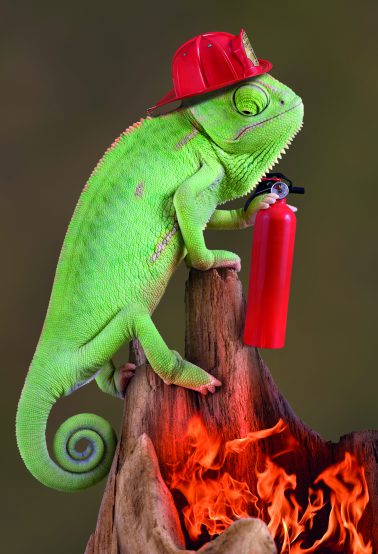5 things a responsible person needs to know

On 1st October 2006, The Regulatory Reform Fire Safety Order 2005 came into force. It was designed to simplify the complex legislation which previously made up UK law on fire safety. The Order sets out the requirements for a ‘responsible person’ to manage fire precautions in a huge range of premises. As such, schools, hotels, factories and hospitals along with many more businesses, are obliged to appoint a ‘responsible person’.
What is a responsible person?
A responsible person ensures that a company or workplace has sufficient fire safety procedures in place. An owner, landlord or manager may all be deemed the responsible person, depending on the nature of a business. In a practical sense and in the eyes of the law, this is an incredibly important role. It can even result in fines or prison sentences if it is not carried out effectively.
For this reason, there is often more than one designated responsible person to take care of a building. Where there are large departments or separate businesses housed together for example, each of these should have a responsible person. They will need to communicate with their own department about the entire building’s fire safety precautions.
Is this the same as a fire warden?
We’ve established that the responsible person manages the fire safety provision for an entire building. To help them out, some elements of the role can be passed on to a fire warden. A fire warden can work alongside the responsible person to plan effective emergency procedures. They can also help establish the appropriate fire prevention protocols. and ensure people are evacuated to a place of safety in the event of a fire or drill. It is often the case that fire wardens are most at risk in the event of a genuine emergency. This is because they are often the person who is charged with clearing the building and even searching for anyone left inside, so they could be the last person to leave.
What are the main responsibilities?
A responsible person has a range of tasks which encompass far more than getting people out if a fire starts. They need to work out the best ways of preventing fires, monitor factors that may constitute a risk and ensure that any fire extinguishers are correctly maintained. Here is a more comprehensive list of their main duties:
• Risk assessments need to be carried out at regular intervals and then reviewed when necessary. The findings of each report should be written up accurately so they can be used in the future where necessary.
• Once any risks are identified, they should be resolved in a way which protects people and the premises. The information should be passed on to employees, employers and anyone who may visit the building from other organisations. Any relevant training should be provided for employees.
• Establish and maintain safety measures by storing equipment correctly and minimising the risk posed by dangerous substances. Part of this will involve keeping routes clear, reviewing the preventative measures which are currently in place and ensuring that riskier areas are restricted for people without the relevant training.
• Set up plans which will be followed should an emergency occur. This will include preparing effective safety drills to get people to a place of safety when an imminent threat is posed by fire.
• Once the fire safety information and procedures are established, this should be presented to staff. As part of their role, the responsible person will need to arrange and oversee regular safety drills to ensure that the procedures in place are appropriate. Any staff members who need training to fulfil their role in the building’s fire safety should be confident and competent in carrying out their tasks. Regular refresh sessions are essential, so everyone knows exactly what is expected of them.
Conclusion
A responsible person implements plans that keep the entire workplace safe should a fire occur and also ensures that the building complies with all relevant fire safety laws. It’s a massive undertaking but remember that there are ways of sharing the load. By appointing a ‘competent person’ who understands health and safety legislation, they have an assistant when it comes to managing risks and working out preventative measures. A responsible person should also gain support by working with other responsible persons in the same building and coordinating their efforts.
Do you have an effective fire evacuation plan in place? Take a look at our Guide to Surviving Fire Emergencies.
